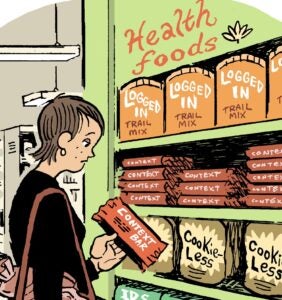 Segmentation for retargeting is often a very manual process that relies heavily on what someone’s done in the past.
Segmentation for retargeting is often a very manual process that relies heavily on what someone’s done in the past.
App marketing platform Jampp wants to help advertisers craft predictive segments that anticipate what someone will likely do in the future.
Jampp’s predictive segments technology, which exited beta on Thursday, uses machine learning to analyze around 800 million daily in-app events and behaviors signals.
Has a user opened the app? How many times and in what time frame? Has the person purchased anything in the last 10 days? Is the user in Boston or Duluth or New York City? Is it raining there? And on and on.
The data helps create segments of the people most likely to convert for specific products and categories or within particular contexts. The segments are updated daily so someone who happened to buy baby clothes for a pregnant friend, for example, isn’t mercilessly stalked by baby outfit ads for weeks to come.
“If segments are created manually, there’s only so much you can do,” said Jampp co-founder Diego Meller. “You have some idea of what will make a user more likely to buy – if they have an expensive phone or they spend more time with an app than the average user does – but that’s not really enough.”
The problem is not only that most of the insights come after the fact – the insights expire. What’s true about a user’s shopping behavior today isn’t necessarily true the next day.
“It’s trial and error – you do it, you see what happens with the conversions and then you make adjustments, but it’s a lot of work, which means most people only change the segments every few weeks or once a month,” Meller said. “But it’s mainly based on hunches. The only way to do this right and in a data-driven way is by letting a computer analyze the data every day.”
Jampp scores users on their probability to convert on a specific event, whether that’s downloading an app, filling out a form, adding an item to the cart or making an purchase. It automatically calculates the optimal cost per click for each group then places bids across more than 200 ad networks and exchanges.
Ecommerce app Souq was one of Jampp’s six beta testers. Souq, the Middle East’s answer to Amazon, also uses Jampp to power its user acquisition and dynamic product ads.
Like Amazon, Souq (which means “open air market” or “bazaar” in Arabic) started life as a dot-com, which it still maintains today. Over the last roughly 18 months, though, its app has become its primary business driver.
“We’ve found that it’s very much about how the user is moving between devices,” said Warrick Godfrey, Souq’s senior regional marketing director. “A large proportion of customers actually start their shopping on the web and finish on the app. And, of course, sometimes it’s the other way around.”
Souq adapts itself to the changeability of the user experience by creating predictive segments based on product categories. The strategy for moving someone down the funnel for electronics, for example, isn’t the same as for fashion, sports or pet care, which “makes the creation of these rules quite complex,” said Godfrey, who noted that sustainable and stable growth is top of mind as Souq comes closer to its probable IPO next year.
“For any business approaching that phase of its life, efficiency is extremely important, especially as we continue to scale,” he said. “And that is where these data partnerships make a lot of sense to me, to improve the return on each dollar spent.”
Souq has collected a lot of user data over the years, arguably far more than even banks or credit card issuers in the region. And that’s because cash on delivery is still the primary way that people want to transact. Roughly 80% of the transactions Souq facilitates are cash-based. Consumers place their purchases online and pay cash when the packages are dropped off.
“Our data pool is big and just keeps on getting bigger,” Godfrey said. “And now we’re able to make better and more insightful decisions about the use of our own data based on the conversion rate of multivariate segments.”
There’s also the room for subtle manipulation. In Souq’s case, for example, it might make intuitive sense to optimize toward the conversion straightaway – it’s an ecommerce app, and ecommerce apps want people to buy stuff.
But Jampp’s strategy is to help clients optimize toward actions that ultimately trigger a conversion down the line, taking users one step further down the funnel rather than aggressively pushing for the conversion. Knowing that a particular action will inevitably bring someone through the funnel helps the advertiser score a cheaper CPC, as opposed to a pricier cost per action. It’s a conversion at CPC prices.
“You don’t have to say, ‘Buy! Buy! Buy!’ all the time to get someone to convert,” Meller said. “It’s all about using the data to understand which users are the most likely to convert in the end.”














